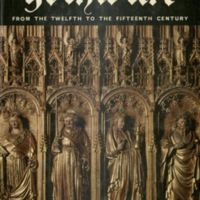Gothic Art: From the Twelfth to the Fifteenth Century
Dublin Core
Title
Gothic Art: From the Twelfth to the Fifteenth Century
Description
Few artistic terms have had such a confused history as the word "Gothic." Andrew Martindale approaches this complex period by first setting up terms with which to deal with it. He considers Gothic art basically as the style that developed in the Ile-de-France and northern France from 1140 to 1240. He traces the ascendancy of the style in other areas of France and in adjoining countries until 1250, when Paris had become an important artistic center and the norther French style had been widely adopted outside France. then Martindale treats Italian art of the next century, which culminated in the painting of Giotto. He shows how the Gothic style influenced the Italians and how their style in turn began to spread northward. From 1350 to 1400, there was increased exchange of artistic ideas across the Alps. There is a chapter on the brief floweirng of Prague as the center of a curiously hybrid culture at this time. "Gothic Art" is equally comprehensive in its treatment of the minor arts of the age and their interrelations -- painting, manuscript illumination, stained glass, tapestry, and metalwork. -- From publisher's description.
Creator
Andrew Martindale
Table Of Contents
The Age of Transition 1146-1240 -- The pre-eminence of Paris 1280-1350 -- Italian art of the mid-thirteenth to mid-fourteenth century -- European art 1350-1400.
Text Item Type Metadata
Original Format
Book
Citation
Andrew Martindale , “Gothic Art: From the Twelfth to the Fifteenth Century,” Humanities Hub, accessed January 16, 2026, https://humanitieshub.sdsu.edu/omeka/items/show/1506.

